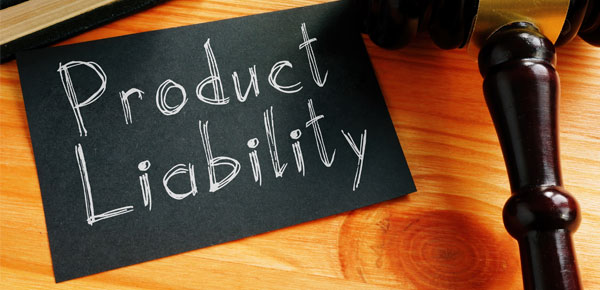A dominant hand injury can significantly impact your daily life and work. Understanding the settlement process and what factors influence the compensation amount is crucial.
This guide will help you grasp the essentials of dominant hand injury settlements, providing valuable insights into what you can expect and how to maximize your compensation.
Factoid About Hand Injuries
| Fact | Statistic |
|---|---|
| Annual lost time cases due to hand injuries | 110,000 |
| Workers treated in ER for hand injuries annually | 1 million |
| Workers not wearing gloves when injured | 70% |
| Workers with damaged or inadequate gloves | 30% |
| Common Type of Hand Injury | Lacerations |
| Common Type of Hand Injury | Crush injuries |
| Common Type of Hand Injury | Fractures |
Understanding Dominant Hand Injuries
Dominant hand injuries can occur in various situations and have far-reaching effects. Your dominant hand is the one you use most frequently, making injuries to this hand particularly debilitating.
Common Causes of Dominant Hand Injuries
Understanding the common causes of dominant hand injuries can help in both preventing such injuries and knowing what to expect if they occur. These injuries can significantly affect your daily activities and work, making awareness crucial.
- Accidents at Work
- Car Accidents
- Falls
- Sports Injuries
- Repetitive Strain
- Household Accidents
Understanding these causes is the first step in preventing hand injuries and preparing for potential claims.
If you have suffered a dominant hand injury, knowing the common causes can also help in explaining and documenting the incident.
Types of Injuries
There are several types of dominant hand injuries, including fractures, sprains, nerve damage, and tendon injuries.
A fracture might require a cast or even surgery, while nerve damage can lead to long-term numbness or weakness.
Tendon injuries often need physical therapy to regain full function.
Long-term Impacts
The long-term impacts of a dominant hand injury can be substantial. You might struggle with basic tasks such as writing, cooking, or driving.
If your job relies heavily on your hand’s dexterity, an injury could also mean a significant loss of income.
For instance, a surgeon with a hand injury may be unable to perform surgeries, leading to financial and professional setbacks.
Factors Influencing Settlement Amounts
Understanding the factors that influence the settlement amounts for dominant hand injuries is crucial. These factors determine the compensation you might receive and help in preparing for negotiations or legal proceedings.
Severity of the Injury
The severity of your injury plays a significant role in determining the settlement amount.
Minor injuries, like a simple fracture, might result in lower settlements compared to severe injuries such as multiple fractures or nerve damage.
For instance, a simple fracture might settle for $30,000, while more severe injuries can lead to settlements exceeding $100,000.
Impact on the Individual’s Ability to Work
If your injury affects your ability to perform your job, the settlement amount can increase significantly.
For example, if a graphic designer loses fine motor skills in their dominant hand, their earning capacity could be greatly reduced, leading to higher compensation.
The loss of income and potential future earnings are critical considerations.
Medical Expenses and Future Medical Care
Medical costs, both current and future, are essential in calculating settlements. This includes hospital bills, surgery costs, physical therapy, and any required future medical care.
For instance, ongoing physical therapy for tendon repair might add thousands of dollars to the settlement amount.
Pain and Suffering
Pain and suffering are subjective but vital components of a settlement. This factor considers the physical pain and emotional distress caused by the injury.
Severe injuries that lead to chronic pain or psychological issues typically result in higher compensation.
Age and Occupation of the Injured Party
Younger individuals or those in physically demanding jobs might receive higher settlements.
For example, a young construction worker might get a higher settlement than an older office worker due to the expected longer impact on their career.
Comparative Negligence
If the injured party is partially at fault for their injury, the settlement amount may be reduced.
For example, if you are found to be 20% at fault for your accident, your settlement might be reduced by that percentage.
Legal Process for Hand Injury Settlements
Navigating the legal process for hand injury settlements can seem daunting, but understanding each step can make it more manageable. This section outlines the key stages involved in pursuing a settlement for a dominant hand injury.
Steps Involved in Filing a Claim
Filing a claim begins with reporting the injury and seeking medical attention.
It’s crucial to report the injury to your employer (if it happened at work) and document the incident in detail.
After reporting, you’ll need to file a claim with the appropriate insurance company or workers’ compensation board.
Importance of Medical Documentation
Medical documentation is vital for supporting your claim.
Detailed records from doctors, hospitals, and physical therapists provide concrete evidence of the injury’s severity and the treatment required.
Keep all medical bills, treatment records, and notes from healthcare providers. This documentation will help substantiate the extent of your injury and its impact on your life.
Role of Legal Representation
Hiring a legal representative can significantly improve your chances of receiving a fair settlement.
An attorney can help you understand your rights, gather necessary evidence, and negotiate with insurance companies on your behalf.
They can also guide you through complex legal procedures and ensure that all paperwork is correctly filed.
Negotiating with Insurance Companies
Insurance companies often aim to minimize payouts, so negotiating with them can be challenging. Having a strong case supported by solid evidence is essential.
Be prepared to counter low settlement offers with detailed explanations of why a higher amount is justified based on your medical expenses, loss of income, and pain and suffering.
Preparing for a Potential Trial
If negotiations with the insurance company do not result in a fair settlement, the case may go to trial.
Preparing for trial involves gathering all relevant evidence, including witness testimonies, medical records, and credible opinions. Your attorney will help present your case effectively, aiming to secure a favorable verdict.
Settlement Negotiations
Settlement negotiations can occur at any stage of the legal process. Often, cases are settled out of court to avoid the uncertainty and expense of a trial.
Successful negotiations depend on the strength of your evidence and the ability of your legal representative to argue convincingly on your behalf.
Workers’ Compensation for Dominant Hand Injuries
Workers’ compensation provides essential financial support to employees who suffer work-related injuries, including those to the dominant hand. Understanding the specifics of workers’ compensation can help you secure the benefits you deserve.
Eligibility for Workers’ Compensation
To be eligible for workers’ compensation, the injury must have occurred while performing job-related duties. This can include sudden accidents, such as a machinery mishap, or repetitive stress injuries, like carpal tunnel syndrome.
It’s important to report the injury to your employer as soon as possible and file a claim within the required timeframe, which varies by state.
Process of Filing a Workers’ Compensation Claim
Filing a workers’ compensation claim involves several critical steps. Understanding this process ensures that you follow the correct procedures and secure the benefits you deserve.
- Report the Injury
- Seek Medical Treatment
- File a Claim
- Complete Necessary Forms
- Follow Up on Medical Care
- Keep Detailed Records
- Communicate with Your Employer
- Consult an Attorney
- Receive Benefits
- Return to Work
Following these steps carefully can help you secure the workers’ compensation benefits you need. Proper documentation and timely actions are crucial throughout the process.
Differences Between Workers’ Compensation and Personal Injury Claims
While both workers’ compensation and personal injury claims provide compensation for injuries, there are key differences.
Workers’ compensation does not require proving fault and covers medical expenses, lost wages, and disability benefits.
Personal injury claims, on the other hand, can include additional compensation for pain and suffering and require proving that the injury was caused by someone else’s negligence.
Returning to Work
After a dominant hand injury, returning to work may involve light-duty assignments or modified tasks that accommodate your injury.
Your healthcare provider will determine when you are fit to return and what limitations, if any, should be placed on your work activities.
Maximizing Your Settlement
Securing a fair settlement for a dominant hand injury requires strategic planning and meticulous documentation. This section provides tips on how to maximize your settlement, ensuring you receive compensation that truly reflects the impact of your injury.
Importance of Hiring an Experienced Attorney
Hiring an experienced attorney is crucial for maximizing your settlement.
An attorney can help you understand your rights, gather necessary evidence, and negotiate with insurance companies.
They can also represent you in court if your case goes to trial, presenting a strong case to ensure you receive fair compensation.
Tips for Documenting Your Injury and Its Impact
Thorough documentation is essential for supporting your claim. Start by keeping detailed records of all medical treatments, including hospital visits, surgeries, and physical therapy sessions.
Document your pain levels, physical limitations, and any changes in your daily activities. Photos of your injury and written statements from healthcare providers can further strengthen your case.
Additionally, maintain a journal detailing how the injury affects your work and personal life.
Strategies for Negotiating with Insurance Companies
Negotiating with insurance companies can be challenging, but there are strategies to increase your chances of a favorable outcome.
First, present a strong case with comprehensive evidence. Be prepared to counter low offers by explaining why a higher amount is justified.
Highlight the severity of your injury, the impact on your ability to work, and any long-term effects.
It’s also beneficial to know the average settlement amounts for similar injuries to support your negotiation.
Understanding and Avoiding Common Pitfalls
Several common pitfalls can jeopardize your settlement.
Avoid giving recorded statements to insurance companies without legal advice, as these can be used against you.
Don’t settle too quickly, especially if the long-term impact of your injury is not yet clear.
It’s also crucial to follow your healthcare provider’s treatment plan to demonstrate your commitment to recovery and avoid accusations of neglecting your health.
Secure Your Fair Settlement Today
If you’ve suffered a dominant hand injury, don’t navigate the complexities alone.
Contact Pyramid Legal, your trusted Pasadena personal injury lawyer, at (818) 814-8070.
They can help you secure the compensation you deserve and guide you through every step of the process.


























